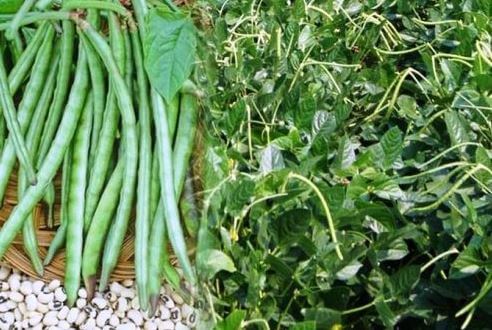Cowpea (Boda) is a vital cash vegetable commercial crop. It is successfully cultivated from February to October in the plains. Moreover, it is a legume plant with thin, elongated beans. These beans are used as a vegetable in the raw state. These beans of Cowpea are also known as Boda Chaula or Chaura beans.
Cowpea is an annual crop grown throughout India for green pods, dry seeds, manure, and fodder. It is a crop of African origin. In addition, Cowpea is drought tolerant, precocious and has early weed resistance. Moreover, it helps in retaining moisture in the soil. Cowpea is the primary source of protein, calcium and iron and is cultivated in the fertile areas of Punjab. This plant is also used to make organic manure. Being a pulse crop, it accumulates atmospheric nitrogen in the soil, which increases the fertility of the soil and the following crop benefits from this nitrogen. Moreover, farmers can grow Cowpeas with the help of a Digitrac tractor in hot and humid climates.
Nutrients Present In Cowpea
Many nutrients such as protein, fat, calcium, phosphorus, iron, carotene, thiamine, riboflavin, niacin, fibre, antioxidants, vitamin B2 and vitamin C present in Cowpeas are also found to be essential for health. Cowpeas can be consumed according to various health conditions such as weight loss, digestion, heart health, body detox, improving circulatory health, relieving sleep problems, skin care, managing diabetes, etc. are beneficial. You can get these benefits by including them in the diet in many ways.
Suitable Soil For Cowpea Cultivation
Almost all types of soil have been considered suitable for cowpea crops. It can be grown in all types of soil with good management. But Matiyar or sandy loam soil is deemed ideal for cowpea crops. However, it is also grown on red, black and laterite soils in many areas. For a good harvest of Cowpeas, fertile soil rich in organic matter is especially suitable for it. Its cultivation requires good drainage land. Highly saline-alkaline soil is not suitable for its cultivation. For its cultivation, the standard pH value of the land should be neutral between 6 to 8.
Cowpea Cultivation Maturing Time
Cowpea is a hot and humid climate crop. This crop is cultivated in the plains from February to March and June to July. Moreover, its farming can also be done along with the Kharif crop. By the way, Cowpea is an annual crop grown all over India. Its crop gets ready after sowing in 45 to 50 days. And this gives about 70 to 75 quintal yield per hectare.
Seed Treatment Before Sowing
For good yield, we should sow the seeds after treating them. About 95 percent of the seeds germinate appropriately by sowing after treating the seeds. Along with this, the possibility of diseases occurring in the crop decreases. Therefore, treat cowpea seeds with thiram at the rate of 2.5 grams per kilogram before sowing, and treat cowpea seeds with specific Rhizobium culture.
Cowpea Sowing Time And Seed Quantity
Cowpea should be sown from February to March for the summer crop and June to July for the rainy season crop. In summer, we can plant it on flat land. And sowing of the rainy season crop can be done in rows on ridges at the height of 15 cm. Also, farmers can use any powerful Sonalika tractor for the sowing tasks. For the cultivation of Cowpeas, seeds are required at the rate of 25 to 30 kg per hectare. Cowpea seeds should be sown in rows for grain and green beans. Sow these seeds according to the type of cultivation. If planting it for grains, the sowing of seeds is 30 to 40 cm. And for beans, do it at a distance of 25 to 35 cm on sowing.
Use Of Manure And Fertilizers
In the case of manure and fertilizers, 10-15 tonnes of cow dung manure per hectare should be mixed in the soil at the time of field preparation. For a good yield of Cowpea, use 30 kg Nitrogen, 50 kg Phosphorus and 40 kg Potash per hectare. Zinc sulphate can also be used according to the requirement of soil and plants. Light irrigation as per requirement after sowing of Cowpea is good for germination. Keep irrigating every week or at an interval of 10 to 12 days due to the increase in temperature in the Zaid season.
Benefits Of Cowpea Cultivation To Farmers
Cowpea is cultivated as a pulse crop. Apart from this, farmers grow Cowpea for green manure, animal fodder and vegetables. And harvest their raw pods and sell them in the local markets. These raw beans are used for eating as a vegetable. The farmer also gets the best nutritious fodder for his animals from the cowpea crop. Farmer brothers can also prepare green manure by ploughing its plants before ripening. Cowpea is mainly cultivated in India in Tamil Nadu, Madhya Pradesh, Karnataka, Rajasthan, Kerala and Uttar Pradesh.
Stay tuned with us to read more about leguminous crops.

